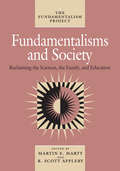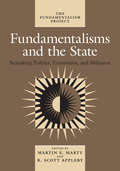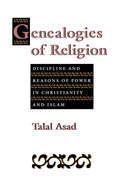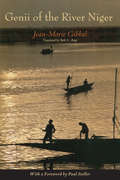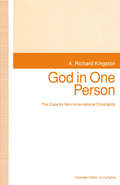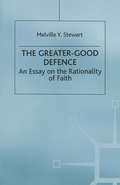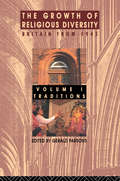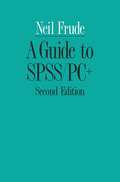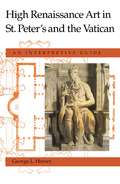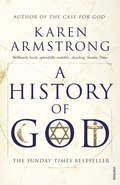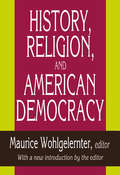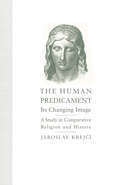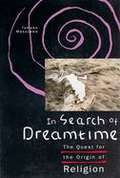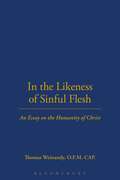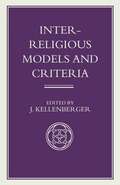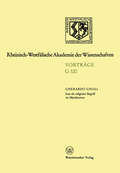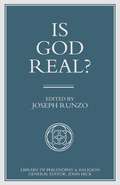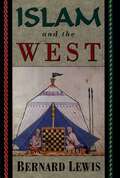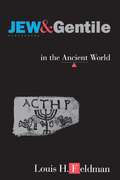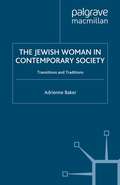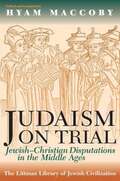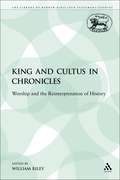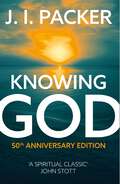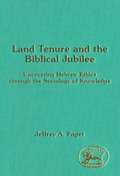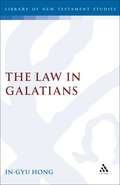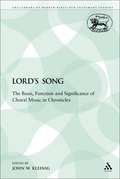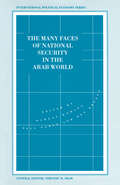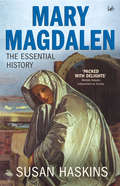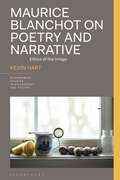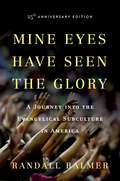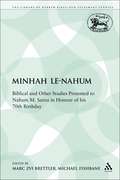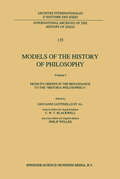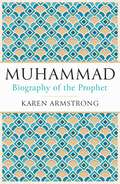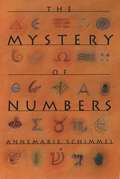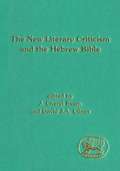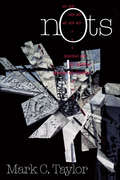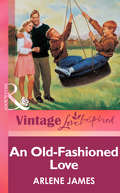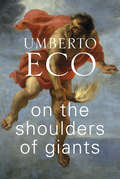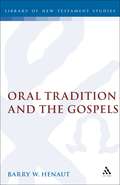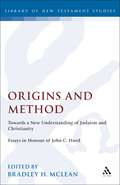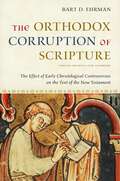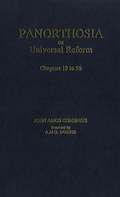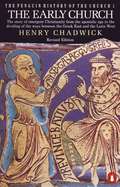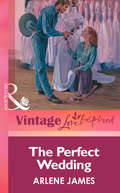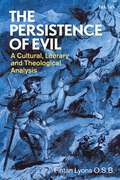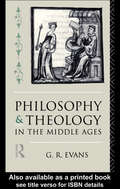Fundamentalisms and Society: Reclaiming the Sciences, the Family, and Education (The Fundamentalism Project #2)
by Martin E. Marty R. Scott Appleby Helen Hardacre Everett Hardacre Everett MendelsohnThe Fundamentalism Project Edited by Martin E. Marty and R. Scott Appleby Around the world, fundamentalist movements are profoundly affecting the way we live. Misinformation and misperception about fundamentalism exacerbate conflicts at home and abroad. Yet policymakers, journalists, students, and others have lacked any comprehensive resource on the explosive phenomenon of fundamentalism. Now the Fundamentalism Project has assembled an international team of scholars for a multivolume assessment of the history, scope, sources, character, and impact of fundamentalist movements within the world's major religious traditions. Fundamentalisms and Society shows how fundamentalist movements have influenced human relations, education, women's rights, and scientific research in over a dozen nations and within the traditions of Islam, Judaism, Christianity, Buddhism, and Hinduism. Drawn from the fields of anthropology, sociology, history of religion, and history of science, the contributors cover topics such as the educational structures of Hindu revivalism, women in fundamentalist Iran and Pakistan, and the creationist cosmos of Protestant fundamentalism. In a concluding essay, William H. McNeill situates contemporary fundamentalisms within a world historical context. The Fundamentalism Project, Volume 2 Martin E. Marty and R. Scott Appleby direct the Fundamentalism Project. Marty, the Fairfax M. Cone Distinguished Service Professor of the History of Modern Christianity at the University of Chicago, is the senior editor of the Christian Century and the author of numerous books, including the multivolume Modern American Religion, also published by the University of Chicago Press. Appleby, a research associate at the University of Chicago, is the author of “Church and Age Unite!” The Modernist Impulse in American Catholicism.
Fundamentalisms and the State: Remaking Polities, Economies, and Militance (The Fundamentalism Project #3)
by Martin E. Marty R. Scott Appleby John H. Garvey Timur KuranDo fundamentalisms tend toward political activism, and how successful have they been in remaking political structures? To answer this question, the contributors to this volume— political scientists, historians of religion, anthropologists, and sociologists—discuss the anti- abortion movement, Operation Rescue in the United States, the Islamic war of resistance in Afghanistan, Shi'ite jurisprudence in Iran, and other issues. The volume considers the effect that antisecular religious movements have had over the past twenty-five years on national economies, political parties, constitutional issues, and international relations on five continents and within the traditions of Islam, Christianity, Judaism, Buddhism, Hinduism, and Sikhism. Marty and Appleby conclude with a synthetic statement on the fundamentalist impact on polities, economies, and state security. The Fundamentalism Project, Volume 3 Martin E. Marty and R. Scott Appleby direct the Fundamentalism Project. Marty, the Fairfax M. Cone Distinguished Service Professor of the History of Modern Christianity at the University of Chicago, is the senior editor of the Christian Century and the author of numerous books, including the multivolume Modern American Religion, also published by the University of Chicago Press. Appleby, a research associate at the University of Chicago, is the author of “Church and Age Unite!” The Modernist Impulse in American Catholicism.
Genealogies of Religion: Discipline and Reasons of Power in Christianity and Islam
by Talal AsadIn Geneologies of Religion, Talal Asad explores how religion as a historical category emerged in the West and has come to be applied as a universal concept. The idea that religion has undergone a radical change since the Christian Reformation—from totalitarian and socially repressive to private and relatively benign—is a familiar part of the story of secularization. It is often invokved to explain and justify the liberal politics and world view of modernity. And it leads to the view that "politicized religions" threaten both reason and liberty. Asad's essays explore and question all these assumptions. He argues that "religion" is a construction of European modernity, a construction that authorizes—for Westerners and non-Westerners alike—particular forms of "history making."
Genii of the River Niger
by Jean-Marie GibbalThe river Niger, a source of life and danger for the people in impoverished eastern Mali, is also the origin of elaborate mythology. From his travels through Mali and down the Niger in a dugout canoe, Jean-Marie Gibbal has created a personal documentary of the cultures of the region. The result is at once an ethnography of cultures in crisis and a poetic evocation of the environment and people he encountered. Gibbal portrays the river as the dominant, cohesive force among people in the face of social and environmental strife. He focuses on the Ghimbala healing cult, which centers on the river, and how the cult structures social relations in the region. Gibbal vividly recreations the Ghimbala rites, nocturnal ceremonies of spirit possession and seance which animate the water spirits, or genii, that inhabit the river. The genii, he finds, provide the strength of social identity in a world where famine and competing versions of Islam threaten to overpower traditional culture. In its original French publication, The Genii of the River Niger was honored with an Alexandra David-Neel literary prize in 1989. Its powerful lyricism, combined with fascinating ethnographic depth, will delight general readers and specialists alike and will stir debates among specialists in African studies, the anthropology of religion, and literature.
God in One Person: The Case for Non-Incarnational Christianity
by A. Richard Kingston Jo CamplingThis text defends a special focus on Jesus in theistic faith, whilst denying his divinity. Having limited the genuine choice in Christology to orthodoxy or unitarianism, it argues first for the prior improbability of an incarnation, examining and dismissing possible justifications.
The Growth of Religious Diversity - Vol 1: Britain from 1945 Volume 1: Traditions
by Gerald ParsonsThis two-volume set considers the role and significance of religion in post-war Britian, focusing, in particular, upon the closely inter-related themes of the decline of a specifically `Christian Society' and the emergence of a culturally and religiously plural society. Three core questions are examined in depth: to what extent and in what ways has religion remained a significant factor in British culture and society in the period since 1945?, what role does religion play in interpreting and understanding the development of a multi-cultural and multi-ethnic society in post-war Britain?, and to what extent has Britain remained (or ceased to be) a `religious society' during this period. Volume 1: Traditions analyses the history and development of the major religious groups present in Britain in the period since 1945. The major religious traditions examined include the traditional Christian churches, Judaism, Islam, Hinduism, Sikhism, Afro-Caribbean religious groups, New Religious Movements, and the `implicit' religion of the `silent majority' who remain detached from organised religion but are by no means simply secular. Volume 2: Controversies explores some of the challenges, tensions and controversies presented by the emergence of an increasingly religiously plural society in Britain since 1945. In particular, it focuses on the impact of religious pluralism on both the Christian churches and other religious traditions, the relationship between communal and national `identities' and religion, women and religion, and the relationship between religion and changing attitudes to personal - and especially sexual - morality.
The Growth of Religious Diversity - Vol 1: Britain from 1945 Volume 1: Traditions
by Gerald ParsonsThis two-volume set considers the role and significance of religion in post-war Britian, focusing, in particular, upon the closely inter-related themes of the decline of a specifically `Christian Society' and the emergence of a culturally and religiously plural society. Three core questions are examined in depth: to what extent and in what ways has religion remained a significant factor in British culture and society in the period since 1945?, what role does religion play in interpreting and understanding the development of a multi-cultural and multi-ethnic society in post-war Britain?, and to what extent has Britain remained (or ceased to be) a `religious society' during this period. Volume 1: Traditions analyses the history and development of the major religious groups present in Britain in the period since 1945. The major religious traditions examined include the traditional Christian churches, Judaism, Islam, Hinduism, Sikhism, Afro-Caribbean religious groups, New Religious Movements, and the `implicit' religion of the `silent majority' who remain detached from organised religion but are by no means simply secular. Volume 2: Controversies explores some of the challenges, tensions and controversies presented by the emergence of an increasingly religiously plural society in Britain since 1945. In particular, it focuses on the impact of religious pluralism on both the Christian churches and other religious traditions, the relationship between communal and national `identities' and religion, women and religion, and the relationship between religion and changing attitudes to personal - and especially sexual - morality.
A Guide to SPSS/PC+
by Neil FrudeWritten for those with little or no experience in using computers for statistical analysis, this book introduces SPSS/PC+, the market leader PC package. A Guide to SPSS/PC+ teaches the use of SPSS/PC+ clearly and simply. Following the book, which is organized as a progressive tutorial, readers can analyze their own data, or may follow worked examples using the complete dataset which is included. The appendices provide a comprehensive guide for beginners and for those needing to revise their SPSS/PC+ skills. A Guide to SPSS/PC+ is now in its second edition and has been revised to cover the new developments available within Version 4.0 of SPSS/PC.
Hasidic Prayer: With a New Introduction (The Littman Library of Jewish Civilization)
by Louis JacobsFrom its very beginnings in the eighteenth century, the Hasidic movement was suffused with a joyous enthusiasm and optimism derived from the notion of God being in all things. This led to an insistence on joy as an essential element in divine worship, and in consequence a distinctive attitude to prayer. This classic work, presented here with a new introduction, is a study of the attitudes of the hasidic rebbes to prayer. Louis Jacobs bases himself principally on the works compiled by rebbes themselves and records preserved by their disciples. Copious quotations from these writings form a sound basis for his masterly analysis—unsurpassed since it was first published in 1972 — and enable the reader to gain a familiarity with Hasidic thought on the subject of divine worship at first hand.
High Renaissance Art In St. Peter's And The Vatican: An Interpretive Guide
by George L. HerseyMichelangelo, Raphael, Bramante--together these artists created some of the most glorious treasures of the Vatican, viewed daily by thousands of tourists. But how many visitors understand the way these artworks reflect the passions, dreams, and struggles of the popes who commissioned them? For anyone making an artistic pilgrimage to the High Renaissance splendors of the Vatican, George L. Hersey's book is the ideal guide. Before starting the tour of individual works, Hersey describes how the treacherously shifting political and religious alliances of sixteenth-century Italy, France, and Spain played themselves out in the Eternal City. He offers vivid accounts of the lives and personalities of four popes, each a great patron of art and architecture: Julius II, Leo X, Clement VII, and Paul III. He also tells of the complicated rebuilding and expanding of St. Peter's, a project in which Bramante, Raphael, and Michelangelo all took part. Having set the historical scene, Hersey then explores the Vatican's magnificent Renaissance art and architecture. In separate chapters, organized spatially, he leads the reader through the Cortile del Belvedere and Vatican Museums, with their impressive holdings of statuary and paintings; the richly decorated Stanze and Logge of Raphael; and Michelangelo's Last Judgment and newly cleaned Sistine Chapel ceiling. A fascinating final chapter entitled "The Tragedy of the Tomb" recounts the vicissitudes of Michelangelo's projected funeral monument to Julius II. Hersey is never content to simply identify the subject of a painting or sculpture. He gives us the story behind the works, telling us what their particular themes signified at the time for the artist, the papacy, and the Church. He also indicates how the art was received by contemporaries and viewed by later generations. Generously illustrated and complete with a useful chronology, High Renaissance Art in St. Peter's and the Vatican is a valuable reference for any traveler to Rome or lover of Italian art who has yearned for a single-volume work more informative and stimulating than ordinary guidebooks. At the same time, Hersey's many anecdotes and intriguing comparisons with works outside the Vatican will provide new insights even for specialists.
A History Of God: The 4,000-year Quest Of Judaism, Christianity And Islam
by Karen ArmstrongThe idea of a single devine being - God, Yahweh, Allah - has existed for over 4,000 years. But the history of God is also the history of human struggle. While Judaism, Islam and Christianity proclaim the goodness of God, organised religion has too often been the catalyst for violence and ineradicable prejudice. In this fascinating, extensive and original account of the evolution of belief, Karen Armstrong examines Western society's unerring fidelity to this idea of One God and the many conflicting convictions it engenders. A controversial, extraordinary story of worship and war, A History of God confronts the most fundamental fact - or fiction - of our lives.
History, Religion, and American Democracy
by Maurice WohlgelernterHistory, Religion, and American Democracy provides a fundamental review of four major themes: naturalism and supernaturalism in an American context; issues in the history of Judaism; American social philosophy; and the teaching and learning of democratic ideals in a pluralistic postmodern environment. This book provides a naturalistic context for the deep analysis of religious, theological, as well as social and political themes.
History, Religion, and American Democracy
by Maurice WohlgelernterHistory, Religion, and American Democracy provides a fundamental review of four major themes: naturalism and supernaturalism in an American context; issues in the history of Judaism; American social philosophy; and the teaching and learning of democratic ideals in a pluralistic postmodern environment. This book provides a naturalistic context for the deep analysis of religious, theological, as well as social and political themes.
In Search of Dreamtime: The Quest for the Origin of Religion (Religion and Postmodernism)
by Tomoko MasuzawaIn this pioneering work of discourse analysis, Tomoko Masuzawa observes that the modern study of religion is peculiarly ambivalent toward the question of origin. Today's historians of religion maintain that they have abandoned speculative quests for the origin of religion; at the same time, they allege that concepts of absolute beginnings are fundamental to religion itself. By renouncing the desire for origins that they claim religious peoples embrace, historians can vicariously participate in the forbidden quest—so it seems—without forfeiting the authority accruing from their objectivist position. This ambivalence of contemporary scholars echoes their ambivalence toward the ancestral "giants" of the discipline: Durkheim, Müller, and Freud. Masuzawa shows that the speculations of these three men on the origins of religion render the very notion of time and history problematic and contain powerful instruments for dislodging the position of "Western man" as the keeper of knowledge. Her critical rereading of these forefathers is framed by a compelling discussion of the postmodernist subversion of absolute origins in the works of Walter Benjamin and Rosalind Krauss and a comparison of Mircea Eliade and Nancy Munn's accounts of the Australian aboriginal "dreamtime." Engaging a number of critical issues within the burgeoning field of cultural studies, Masuzawa's book will have far-reaching implications not only for religious studies but throughout the human sciences.
In the Likeness of Sinful Flesh: An Essay on the Humanity of Christ
by Thomas WeinandyForeword by Colin Gunton.Draws upon both the Catholic and the Protestant theological traditions to explore the humanity of Jesus.
Inter-Religious Models and Criteria
by J. KellenbergerThis book is a collection of papers presented and discussed at the 1992 Claremont Conference. Its contributing authors come from various disciplines that share a concern with models and criteria for inter-religious understanding, including religious studies, philosophy of religion, theology, comparative studies, and feminist philosophy.
Iran als religiöser Begriff im Mazdaismus: 355. Sitzung am 18. März 1992 in Düsseldorf (Rheinisch-Westfälische Akademie der Wissenschaften #320)
by Gherardo GnoliIslam: Area 1 Religion And Ethics Through Christianity, Area 2 Religion, Peace And Conflict Through Islam (Bullet Guides)
by Victor W WattonOpen this book and you will Discover Islamic worship Learn about Muhammed Explore the Qur'an Understand contemporary issues
Islam and the West (The\cambridge History Of Islam Ser.)
by Bernard LewisHailed in The New York Times Book Review as "the doyen of Middle Eastern studies," Bernard Lewis has been for half a century one of the West's foremost scholars of Islamic history and culture, the author of over two dozen books, most notably The Arabs in History, The Emergence of Modern Turkey, The Political Language of Islam, and The Muslim Discovery of Europe. Eminent French historian Robert Mantran has written of Lewis's work: "How could one resist being attracted to the books of an author who opens for you the doors of an unknown or misunderstood universe, who leads you within to its innermost domains: religion, ways of thinking, conceptions of power, culture--an author who upsets notions too often fixed, fallacious, or partisan." In Islam and the West, Bernard Lewis brings together in one volume eleven essays that indeed open doors to the innermost domains of Islam. Lewis ranges far and wide in these essays. He includes long pieces, such as his capsule history of the interaction--in war and peace, in commerce and culture--between Europe and its Islamic neighbors, and shorter ones, such as his deft study of the Arabic word watan and what its linguistic history reveals about the introduction of the idea of patriotism from the West. Lewis offers a revealing look at Edward Gibbon's portrait of Muhammad in Decline and Fall of the Roman Empire (unlike previous writers, Gibbon saw the rise of Islam not as something separate and isolated, nor as a regrettable aberration from the onward march of the church, but simply as a part of human history); he offers a devastating critique of Edward Said's controversial book, Orientalism; and he gives an account of the impediments to translating from classic Arabic to other languages (the old dictionaries, for one, are packed with scribal errors, misreadings, false analogies, and etymological deductions that pay little attention to the evolution of the language). And he concludes with an astute commentary on the Islamic world today, examining revivalism, fundamentalism, the role of the Shi'a, and the larger question of religious co-existence between Muslims, Christians, and Jews. A matchless guide to the background of Middle East conflicts today, Islam and the West presents the seasoned reflections of an eminent authority on one of the most intriguing and little understood regions in the world.
Jew and Gentile in the Ancient World: Attitudes and Interactions from Alexander to Justinian
by Louis H. FeldmanRelations between Jews and non-Jews in the Hellenistic-Roman period were marked by suspicion and hate, maintain most studies of that topic. But if such conjectures are true, asks Louis Feldman, how did Jews succeed in winning so many adherents, whether full-fledged proselytes or "sympathizers" who adopted one or more Jewish practices? Systematically evaluating attitudes toward Jews from the time of Alexander the Great to the fifth century A.D., Feldman finds that Judaism elicited strongly positive and not merely unfavorable responses from the non-Jewish population. Jews were a vigorous presence in the ancient world, and Judaism was strengthened substantially by the development of the Talmud. Although Jews in the Diaspora were deeply Hellenized, those who remained in Israel were able to resist the cultural inroads of Hellenism and even to initiate intellectual counterattacks. Feldman draws on a wide variety of material, from Philo, Josephus, and other Graeco-Jewish writers through the Apocrypha, the Pseudepigrapha, the Church Councils, Church Fathers, and imperial decrees to Talmudic and Midrashic writings and inscriptions and papyri. What emerges is a rich description of a long era to which conceptions of Jewish history as uninterrupted weakness and suffering do not apply.
The Jewish Woman in Contemporary Society: Transitions and Traditions
by A. BakerAcross the religious/non-religious spectrum, Jewish women have been affected by the women's movement, the impact on some leading to a reassessment of the woman's role in Judaism, with its emphasis on family and home. Conversely, a small but significant minority have withdrawn into the safety of extreme Orthodoxy. In the centre, the majority are seeking a balance between the powerful internalized message of Judaism, extolling marriage and motherhood as woman's primary concern, and a changing perception of themselves.
Judaism on Trial: Jewish-Christian Disputations in the Middle Ages (The Littman Library of Jewish Civilization)
by Hyam MaccobyHyam Maccoby's now classic study focuses on the major Jewish—Christian disputations of medieval Europe: those of Paris (1240), Barcelona (1263), and Tortosa (1413–14). It examines the content of these theological confrontations with a sense of present-day relevance, while also discussing the use made of scriptural proof-texts. Part I provides a general thematic consideration of the three disputations and their social and historical background. Part II is a complete translation of the account of the Barcelona Disputation written by Nahmanides, one of the greatest figures in the history of Jewish learning, and was Jewish spokesman at the disputation. Part III contains Jewish and Christian accounts of the Paris and Tortosa disputations. A new introduction reviews the relevant literature that has been published since the original edition appeared.
King and Cultus in Chronicles: Worship and the Reinterpretation of History (The Library of Hebrew Bible/Old Testament Studies)
by William RileyBy means of a final-form consideration of the Chronicler's narrative, this study focuses attention on Chronicles' portrayal of the interactive relationship between the Jerusalem kings and the Jerusalem cultus. The Chronicler's development of ancient Near Eastern royal and temple ideologies is examined-a development that allowed the monarchical ideologies to be applied to Judah long after kingship had ceased. How the Chronicler's portrayal of the relationship between the kings and the Jerusalem cultus allowed monarchical ideologies to be applied to Judah long after kingship had ceased.
Knowing God: Know The Fullness Of Life With God
by J.I. PackerFor more than 30 years, J. I. Packer's classic book KNOWING GOD has revealed to well over a million readers the wonder, glory and the joy of knowing God. It continues to sell in tens of thousands to Christians around the world.
Land Tenure and the Biblical Jubilee: Uncovering Hebrew Ethics through the Sociology of Knowledge (The Library of Hebrew Bible/Old Testament Studies)
by Jeffrey A. FagerThe biblical jubilee represents one of the most radical programmes for land reform from the ancient Near East, yet it was never practised in ancient Israel. What then is the meaning of this sacred law that was never enforced? This cogently argued book attempts to answer that question by using the tools of sociological analysis. Fager examines three levels of meaning within the jubilee legislation, which was produced by the priestly intellectuals during the period of exile. The actual words of the text carry one meaning and the priests intended a slightly different meaning, but underlying both was a moral world view that guided them. The laws of the biblical jubilee thus enable us to examine the deepest level of the ancient Israelites' understanding of land and justice.
The Law in Galatians (The Library of New Testament Studies #81)
by In-Gyu HongAn investigation of Paul's theology of the law in Galatians, in the light of recent hermeneutical developments. Part I analyses the structure of the letter, the theological perspective of Paul, and the argument and identity of the opponents. On the basis of these three preliminary considerations, Part II treats Paul's view of the law in Galatians. The thrust of the author's argument is that the term nomos refers to the Mosaic law imposed upon Israel at Mount Sinai, and that this law functions on three distinctive levels: as the obligation of the Sinai covenant, as an enslaving power and as an expression of love.
The Lord's Song: The Basis, Function and Significance of Choral Music in Chronicles (The Library of Hebrew Bible/Old Testament Studies)
by John W. KleinigWhy do the books of Chronicles regard the performance of choral music as an integral part of the sacrificial ritual at the temple, despite the lack of sanction for it in the Pentateuch? And why do they stress that it must be synchronized with the presentation of the regular public burnt offering at the temple? These and other questions are answered in this challenging new volume. After an introductory chapter defining the scope of the study as an analysis of the ritual function and theological significance of sacred song, the author examines the divine institution and royal establishment of the Levitical choir in Jerusalem. This is followed by an examination of the components of the Lord's song in terms of its contents, location, times, instruments and performers. A chapter on the function of sacred song as determined by its place within the sacrificial ritual follows, and the fifth chapter deals with its theological significance as the proclamation of the Lord's presence with his people.
The Many Faces of National Security in the Arab World (International Political Economy Series)
by Rex Brynen Bahgat Korany Paul NobleTwo Gulf wars and the continuing Arab-Israeli conflict have highlighted the salience of military factors in the Middle East. This book argues, however, that many of the most serious 'security' challenges to Arab states and societies are rooted not in external military threats but in the imperatives of socio-economic development. Contributors examine the regional security environment; the social and political impact of regional militarization; and underdevelopment as a source of regional insecurity.
Mary Magdalen: Truth and Myth
by Susan HaskinsA dramatic, thought-provoking portrait of one of the most compelling figures in early Christianity which explores two thousand years of history, art, and literature to provide a close-up look at Mary Magdalen and her significance in religious and cultural thought.
Maurice Blanchot on Poetry and Narrative: Ethics of the Image (Bloomsbury Studies in Philosophy and Poetry)
by Kevin HartBlanchot and his writings on three major poets, Mallarmé, Hölderlin, and Char, provide a decisive new point of departure for English language criticism of his philosophical writings on narrative in this study by leading Blanchot scholar, Kevin Hart.Connecting his work to later leading figures of 20th-century French philosophy, including Emmanuel Levinas, Simone Weil, and Jacques Derrida, Hart highlights the importance of Jewish philosophy and political thought to his overall conception of literature. Chapters on community and negation reveal Blanchot's emphasis on the relationship between narrative and politics over the more commonly connected narrative and aesthetics. By fully discussing Blanchot's elusive concept of “the Outside” for the first time, this book progresses scholarly understandings of his entire oeuvre further. This central concept engages Franz Rosenzweig's work on Abrahamic faiths, enabling a reckoning on the role of suffering and literature in the wake of the Shoah, with significant implications for Jewish studies more generally.
Mine Eyes Have Seen the Glory: A Journey Into The Evangelical Subculture In America
by Randall BalmerMinhah Le-Nahum: Biblical and Other Studies Presented to Nahum M. Sarna in Honour of his 70th Birthday (The Library of Hebrew Bible/Old Testament Studies)
by Marc Zvi Brettler Michael FishbaneNahum Sarna's distinctive and original scholarship has taken in a wide range of subject areas from work on Genesis and the Psalms to his Jewish Bible commentary and the English translation of the Ketuvim. At first Assistant Professor of Bible at the Jewish Theological Seminary of America in the 1950s, he was Dora Golding Professor of Bible at Brandeis University from 1965 to his retirement. This collection of 22 essays reflects Professor Sarna's breadth of interests, with contributions from the late Gershon Cohen on the Hebrew Crusade Chronicle and the Ashkenazic tradition; Judah Goldin on Reuben; Moshe Greenberg and Jonas Greenfield on the work of the Jewish Publication Society's Ketuvim translators; and Shemaryahu Talmon on fragments of a Psalms scroll from Masada.
Models of the History of Philosophy: From its Origins in the Renaissance to the ‘Historia Philosophica’ (International Archives of the History of Ideas Archives internationales d'histoire des idées #135)
by C. W. Blackwell Philip WellerModels of the History of Philosophy. From its Origins in the Renaissance to the `Historia philosophica' (a translation of a work published in 1981 in Italian - the bibliography has been updated) gives a comprehensive description of the various forms and approaches in the literature of the history of philosophy from the fifteenth to the middle of the seventeenth century. Several traditions are described, from the well known `prisca theologia' and `perennis philosophia' traditions of Marsilio Ficino and Augustino Steuco, which claimed that the Greeks got their philosophy from the East, to the unknown influence of Scepticism on the history of philosophy by the recovery of Sextus Empiricus, and the German Protestant critical attack on Greek philosophy as Atheistic which was the tradition of the history of philosophy out of which Leibniz developed. Each individual historian of philosophy is given a separate entry which includes a biography, a complete bibliography of his works, a description of his history of philosophy and ends with both an assessment of his reputation during his own time and a complete listing of recent literature on him. As a result the substantial variety in the way the history of philosophy was written and, with it, an overview of the way western civilization developed is described in detail for the first time. For university history of literature, history of culture, history of religion and history of philosophy classes. The book can be used both for undergraduate courses (for specific reading assignments) and as background material for graduate courses. The bibliography provides important aids to many topics which have previously been almost inaccessible.
Muhammad: Biography of the Prophet
by Karen ArmstrongA life of the prophet Muhammad by bestselling author Karen Armstrong.'Armstrong has a dazzling ability: she can take a long and complex subject and reduce it to its fundamentals, without over-simplifying' SUNDAY TIMES'One of our best living writers on religion' FINANCIAL TIMES'Not just a sympathetic book that would dispel the misconceptions and misgivings of its western readers, but also a book that is of considerable importance to Muslims' MUSLIM NEWSMost people in the West know very little about the prophet Muhammad. The acclaimed religious writer Karen Armstrong has written a biography which will give us a more accurate and profound understanding of Islam and the people who adhere to it so strongly. Muhammad also offers challenging comparisons with the two religions most closely related to it - Judaism and Christianity.
The Mystery of Numbers
by Annemarie SchimmelWhy is the number seven lucky--even holy--in almost every culture? Why do we speak of the four corners of the earth? Why do cats have nine lives (except in Iran, where they have seven)? From literature to folklore to private superstitions, numbers play a conspicuous role in our daily lives. But in this fascinating book, Annemarie Schimmel shows that numbers have been filled with mystery and meaning since the earliest times, and across every society. In The Mystery of Numbers Annemarie Schimmel conducts an illuminating tour of the mysteries attributed to numbers over the centuries. She begins with an informative and often surprising introduction to the origins of number systems: pre-Roman Europeans, for example, may have had one based on twenty, not ten (as suggested by the English word "score" and the French word for 80, quatrevingt --four times twenty), while the Mayans had a system more sophisticated than our own. Schimmel also reveals how our fascination with numbers has led to a rich cross-fertilization of mathematical knowledge: "Arabic" numerals, for instance, were picked up by Europe from the Arabs, who had earlier adopted them from Indian sources ("Algorithm" and "algebra" are corruptions of the Arabic author and title names of a mathematical text prized in medieval Europe). But the heart of the book is an engrossing guide to the symbolism of numbers. Number symbolism, she shows, has deep roots in Western culture, from the philosophy of the Pythagoreans and Platonists, to the religious mysticism of the Cabala and the Islamic Brethren of Purity, to Kepler's belief that the laws of planetary motion should be mathematically elegant, to the unlucky thirteen. After exploring the sources of number symbolism, Schimmel examines individual numbers ranging from one to ten thousand, discussing the meanings they have had for Judaic, Christian, and Islamic traditions, with examples from Indian, Chinese, and Native American cultures as well. Two, for instance, has widely been seen as a number of contradiction and polarity, a number of discord and antithesis. And six, according to ancient and neo-platonic thinking, is the most perfect number because it is both the sum and the product of its parts (1+2+3=6 and 1x2x3=6). Using examples ranging from the Bible to the Mayans to Shakespeare, she shows how numbers have been considered feminine and masculine, holy and evil, lucky and unlucky. A highly respected scholar of Islamic culture, Annemarie Schimmel draws on her vast knowledge to paint a rich, cross-cultural portrait of the many meanings of numbers. Engaging and accessible, her account uncovers the roots of a phenomenon we all feel every Friday the thirteenth.
The New Literary Criticism and the Hebrew Bible (The Library of Hebrew Bible/Old Testament Studies)
by J. Cheryl Exum David J. ClinesThe purpose of this original volume is to illustrate what has been happening recently in Hebrew Bible studies under the influence of developments in literary theory in the last couple of decades. The methods and practice of reader-response criticism and deconstruction, as well as of feminist, materialist and psychoanalytic approaches are represented here by essays from leading Hebrew Bible literary critics. Alice Bach, Robert Carroll, Francisco Garcia-Treto, David Jobling, Francis Landy, Stuart Lasine, Peter Miscall, Hugh Pyper, Robert Polzin, and Ilona Rashkow, together with the two editors, present distinctive and eclectic essays on particular biblical texts, introducing students and scholars to exciting new dimensions of biblical study.
Nots (Religion and Postmodernism)
by Mark C. TaylorNots is a virtuoso exploration of negation and negativity in theology, philosophy, art, architecture, postmodern culture, and medicine. In nine essays that range from nihility in Buddhism to the embodiment of negativity in disease, Mark C. Taylor looks at the surprising ways in which contrasting concepts of negativity intersect. In the first section of this book, Taylor discusses the question of the "not" in the religious thought of Anselm, Hegel, Derrida, and Nishitani. In the second part, he analyzes artistic efforts "to figure not" in the work of artists Arakawa and Madeline Gins, architect Daniel Libeskind, pop artist David Sallee, and pop icon Madonna. The final section consists of a deeply personal and scientifically informed chapter that discusses the workings of negativity in immunology and illness. Taylor's essays work toward a sense of the not as unnameable as it is irrepressible—an "unthinkable third" that falls between being and nonbeing. Bringing together concerns that span Taylor's early investigations of Hegel and Kierkegaard and recent studies of art and architecture, Nots is an important contribution by one of the most original and distinctive voices now writing on the American scene. Religion and Postmodernism series
An Old-Fashioned Love (Mills And Boon Vintage Love Inspired Ser. #2)
by Arlene JamesEVERYDAY MIRACLES TRIPLE TROUBLE!
On the Shoulders of Giants: The Milan Lectures
by Umberto EcoThe final collection of essays from the internationally acclaimed and bestselling author of The Name of the Rose and The Prague Cemetery, on the subjects of art and culture.In this collection of essays we find Umberto Eco’s perennial areas of interest explored in a lively and engaging style, accompanied by beautiful reproductions of the art he discusses. In these wide-ranging pieces he explores the roots of our civilization, changing ideas of beauty, our obsession with conspiracies and the emblematic heroes of the great narrative, amongst other fascinating topics.Umberto Eco was one of the most influential, and entertaining, intellectuals of the last century, as well as being a critically acclaimed and bestselling writer of both fiction and non-fiction.
Oral Tradition and the Gospels: The Problem of Mark 4 (The Library of New Testament Studies #82)
by Barry HenautThe problem of oral tradition is well known, for without some theory of this medium no history of Jesus would be possible. This study examines Mark 4.1-34 in the light of three distinctive models of orality: Rudolf Bultmann's form-critical method, B. Gerhardsson's 'Memory and Manuscript' theory and the recent contribution of W. Kelber. The form-critically separate units in the test (allegory, parables and aphorisms) are examined on the basis of their attestation in various documents (Mark, Q, Thomas) to determine whether independent versions of these sayings can be identified and what they tell us about the oral phase and Jesus. This analysis suggests that the criteria for authenticity of 'distinctiveness' and 'multiple attestation' need to be re-examined in light of the folkloric understanding of orality.
Origins and Method--Towards a New Understanding of Judaism and Christianity: Essays in Honour of John C. Hurd (The Library of New Testament Studies)
by Bradley H. McLeanThis collection of essays is presented in honour of John C. Hurd on the occasion of his retirement as Professor of New Testament at Trinity College, Toronto, and in recognition of a distinguished career in the fields of Pauline studies and computing in the humanities. Given Professor Hurd's interest in Christian origins and methodology, it is appropriate that the contributors to this volume deal with the origin and development of various aspects of Judaism and Christianity. In particular they highlight how a greater attentiveness to method has resulted in a reshaping of our understanding of Christianity or Judaism. The volume is divided into three parts: 'New Understandings of Paul', 'New Understandings of the New Testament', and 'New Understandings of the Relationship between Judaism and Christianity'. Contributors include Walter Aufrecht, Karl Donfried, Robert Grant, John Kloppenborg, Gerd Ludemann and Wayne McCready.
The Orthodox Corruption of Scripture: The Effect of Early Christological Controversies on the Text of the New Testament
by Bart D. EhrmanVictors not only write history: they also reproduce the texts. Bart Ehrman explores the close relationship between the social history of early Christianity and the textual tradition of the emerging New Testament, examining how early struggles between Christian "heresy" and "orthodoxy" affected the transmission of the documents over which many of the debates were waged. He makes a crucial contribution to our understanding of the social and intellectual history of early Christianity and raises intriguing questions about the relationship of readers to their texts, especially in an age when scribes could transform the documents they reproduced. This edition includes a new afterword surveying research in biblical interpretation over the past twenty years.
Panorthosia by Comenius 19-26
by A.M.O. DobbiePanorthosia (Universal Reform) is the essential theme of John Amos Comenius's famous Consultation on the Reform of Human Affairs, and chapters 19-26 represent its climax. In this volume is presented the first English translation of this major work of Comenius, which was lost from about 1672 until 1934 when the Latin scholars of Czechoslovakia had it edited for publication in Prague in 1960.
The Penguin History of the Church: The Early Church (Penguin History Of The Church Ser. #Vol. 1)
by Henry ChadwickExamines the beginning of the Christian movement during the first centuries AD, and the explosive force of its expansion throughout the Roman world
The Perfect Wedding (Mills And Boon Vintage Love Inspired Ser.)
by Arlene JamesEVERYDAY MIRACLES A BRIDE AT LAST?
The Persistence of Evil: A Cultural, Literary and Theological Analysis
by Revd Fintan Lyons O.S.B.Recording the history of the belief in the existence of Satan, this book draws from the Bible, the poetry of Dante and Milton, the legend of Faust, and from modern novels and plays such as the works of Mark Twain and G.B. Shaw, and the spiritual writing of C. S. Lewis. Fintan Lyons O.S.B. chronicles the decline of that belief through the centuries as well as the attempts to treat the problem of evil philosophically, using the insights of thinkers such as Karl Barth. At the heart of this book is the attempt to synthesise or reconcile traditional belief with contemporary concern or even alarm regarding evil in the world. Lyons argues that evidence for the persistence of evil has been striking in modern times in wars and atrocities, while phenomena such as Satanic Cults and possible or real diabolical possession have continued to increase. The Catholic Church reacted to this situation in 1998 with a revision of the 1614 Rite of Exorcism, analysed in this book from both theological and psychological standpoints. By arguing that the transition from belief in Satan to personification of evil in historical regimes and characters brings contemporary culture into sharp focus, this book chronicles the history of humanity's attempt to understand the disturbing and mysterious reality of evil.
Philosophy and Theology in the Middle Ages
by G. R. EvansIn the ancient world being a philosopher was a practical alternative to being a christian. Philosophical systems offered intellectual, practical and moral codes for living. By the Middle Ages however philosophy was largely, though inconsistently, incorporated into Christian belef. From the end of the Roman Empire to the Reformation and Renaissance of the sixteenth century Christian theologians had a virtual monopoly on higher education. The complex interaction between theology and philosophy, which was the result of the efforts of Christian leaders and thinkers to assimilate the most sophisticated ideas of science and secular learning into their own system of thought, is the subject of this book. Augustine, as the most widely read author in the Middle Ages, is the starting point. Dr Evans then discusses the classical sources in general which the medieval scholar would have had access to when he wanted to study philosophy and its theological implications. Part I ends with an analysis of the problems of logic, language and rhetoric. In Part II the sequence of topics - God, cosmos, man follow the outline of the summa, or systematic encyclopedia of theology, which developed from the twelfth century as a text book framework. Does God exist? What is he like? What are human beings? Is there a purpose to their lives? These are the great questions of philosophy and religion and the issues to which the medieval theologian addressed himself. From `divine simplicity' to ethics and politics, this book is a lively introduction to the debates and ideas of the Middle Ages.
